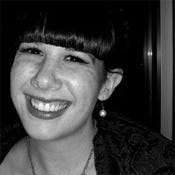EMR Monitoring Tool Catches Sepsis Cases EarlierEMR Monitoring Tool Catches Sepsis Cases Earlier
CareVeillance, a first-of-its-kind sepsis identification tool, replicates patient information from an EMR and monitors patients in real time for the complication.


8 Health IT Certification Programs Offer Career Boost
8 Health IT Certification Programs Offer Career Boost (click image for larger view and for slideshow)
Sepsis--a medical condition in which the body has a severe inflammatory response to bacteria or other microbes --costs the US approximately $14.6 billion a year, according to the Centers for Disease Control and Prevention. Several initiatives put in place at the University of Kansas Hospital are making a dent in those numbers, resulting in a savings of $18,000 per patient, or $18 million a year.
The university hopes to take this success one step further with the use of CareVeillance, a first-of-its-kind sepsis identification tool that replicates patient information from an electronic medical record (EMR) and monitors patients in real time for the complication.
Bryan Eckert, senior principal at CSC Health Delivery Group, said in an interview with information Healthcare that the CareVeillance system includes customer-designed workflows and algorithms to provide this situational awareness, and it automates risk scoring while finding early warning signals often buried in the EMR.
"At a high level, we use industry-standard means of replicating patient information from an EMR: it doesn't matter whose it is," Eckert said. "We're grabbing information at the interface level ... we're grabbing it at two tiers."
[ For more background on e-prescribing tools, see 6 E-Prescribing Vendors To Watch. ]
A few years back, CareVeillance identified the University of Kansas Hospital, also known as KUMed, as a starting point to test out the system. Together, the two have been "aggressively working at reducing the human and economic toll of sepsis," said Eckert. "They were our alpha customer. [KUMed] first saw sepsis at-risk patient lists toward the end of second calendar quarter last year."
Eckert said the medical center took the time to ensure the tool was rolled out correctly, and today, KUMed has been employing CareVeillance for about six months. In 2005, KUMed began its journey to reduce sepsis incidents and saw a drop in sepsis mortality rates from 49% to 22% over the past seven years. The organization did so with the help of the Surviving Sepsis campaign: an initiative developed to improve the management, diagnosis, and treatment of sepsis.
Now, with the introduction of CareVeillance, Steve Simpson, MD, professor of medicine, acting division chief, and director of fellowship training at KUMed, sees it as "our ticket to see further reductions in mortality," he said in an interview.
"CareVeillance is helping us to identify an extra two or three patients a day that we're catching earlier," said Simpson. "How do we know that? We know that when we call a diagnosis that hasn't been entertained, or it's been thought of as a possibility but not a probability."
Simpson and his team are in the process of making comparisons of sepsis mortality rates before and after implementing CareVeillance. What they're seeing, he said, is at least a half-hour difference in identifying sepsis in a patient with the use of the tool. "Functionality-wise, CareVeillance is an early warning system for us," said Simpson. "It may pick up the right data before the physician has seen the right data; that often happens."
Antibiotics given to patients within the first half hour of identifying their sepsis, Simpson added, switches survival rates from 20% survival and 80% mortality without medication, to 80% survival, 20% mortality with medication.
Simpson said the tool was easy to implement, and although they were afraid physicians would look at it as "someone looking over their shoulder," overall, the response has been positive.
"We've been careful all along. It's the one problem: CareVeillance sounds like 'surveillance,' which sounds like the Gestapo, but we've been careful to tell people it's a safety net--it's watching when you're not or when you can't."
About the Author
You May Also Like






